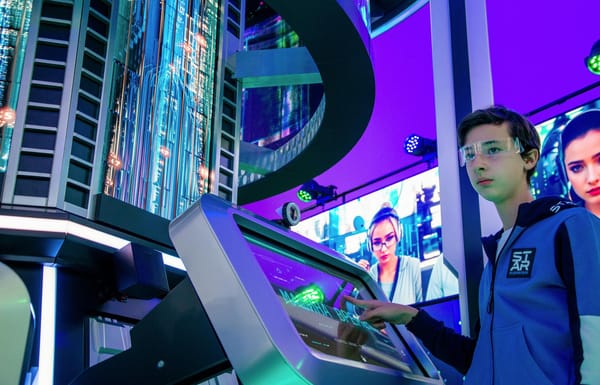Can virtual reality combat real-world isolation?
In a post-pandemic world, virtual reality might meet your socialisation needs.

Written by Kajal Iyer
The Covid-19 pandemic forced people to stay at home for long periods, cutting out social interactions. Suddenly, the entire world was living the world that introverts and avid gamers preferred on a daily basis. Gamers who also happened to be introverts had found a way sometime ago to live in an alternate world, where they felt more themselves. This world was facilitated by VR. But what about the newly isolated? Could the world of VR provide them solutions to their need to connect?
Kayleigh, 34, who owns a Sony Playstation told Poocho, “Bonding with your friends is kind of like the big deal of this (VR). Its more than just you know, playing a board game with your friends, which is fun, but playing VR with a bunch of your friends, especially ones that probably can’t afford a VR set is probably the next best thing to having all of your friends on a VR headset.”
The VR industry rose to the challenge of bringing people closer during the pandemic. One of the earliest entrants in the social virtual reality market was Second Life, way back in 2003, that provided people virtual spaces to meet, interact and instead of giving any specific activities to its users, it allowed them to explore virtual spaces, just as you would explore a mall or some other physical space with a friend. However, this had to be accessed by a computer. VR headsets now provide similar experiences.
In a study published by Miquel Barreda Angeles and Tilo Hartmann in Science Direct, the researches note, “Our research points out the important role that immersive VR technology may play in favoring social connectivity and users' wellbeing in scenarios where other options (e.g., face-to-face contact) are not available. This may refer to periods of social distancing, but may also be applicable to other circumstances (e.g., long-distance couples or expat workers).”
Rick Robinson, VP, AARP Innovation Labs, told Forbes magazine, “On Zoom or other video chat, you can catch up and talk about your day in a very flat way while in VR you can do so much more— you can meditate together and travel the world together. You can play games in a completely immersive way.” Their VR product Alcove is targeted at families wanting to spend time together.
Dr. Mathew White, co-author of a study on VR and nature told Exeter University News, “Virtual reality could help us to boost the wellbeing of people who can’t readily access the natural world, such as those in hospital or in long term care.” In fact, as this report in a newsletter published by McKnight’s assisted living suggests, VR was being used in California’s senior homes to help senior tackle Covid induced isolation, as most homes did not allow visitors in the pandemic.
The VR industry is working towards creating more shared experiences in the wake of the pandemic. Virtual travel with friends and family to prominent travel spots is already a rage. As this report notes, virtual schooling has moved beyond just online classes to VR visits to schools and shared interactions just like on campus. Apps like Bigscreen VR are offering the experience of watching a movie, similar to that of a physical cinema hall in the virtual space. Speaking to Stanford University’s psychiatry department, Dr. Kim Bullock, highlighted the use of VR in mental health therapy, “If a patient can take home a headset or have one delivered to their home, VR therapy can be provided even when visits are done remotely. A therapist can control the experience from a distance. Mobile VR devices also allow patients to practice activities or skills between sessions, or on their own.”
But therein lies one of the major issues Poocho’s insights hit upon – the availability and affordability of VR headsets for shared experiences. Nadeem, a 28-year-old VR owner told Poocho, “I do wish that more of my friends owned a VR headset, because most of my friends don’t have it.” The other huge constraint is space. Eric, 21, another VR owner said, “That’s (space is) a massive thing. Because if my friends have or even if I did have two headsets for my friends to play in my apartment, there is not enough space in my Brooklyn apartment for us to play together.”
Experts believe that the pandemic has accelerated the prevalence of VR in our social lives and with the pandemic restrictions continuing in most places, VR may be how more and more people hang out, in the times to come.



